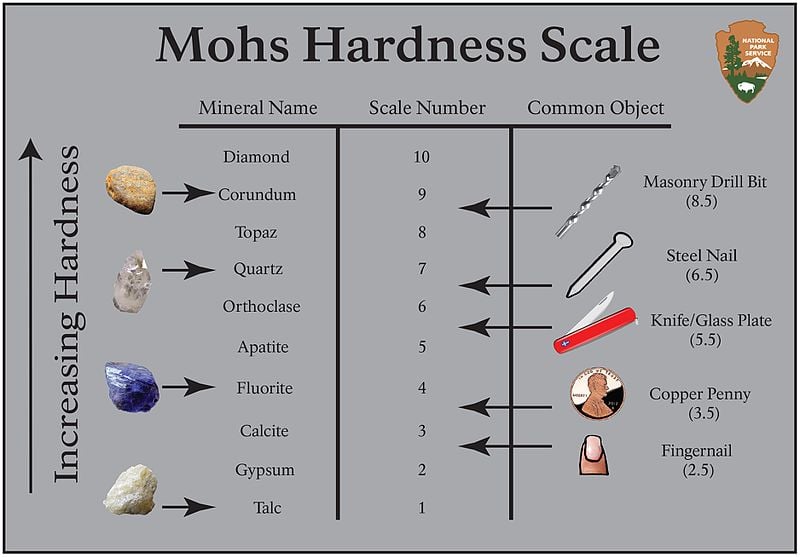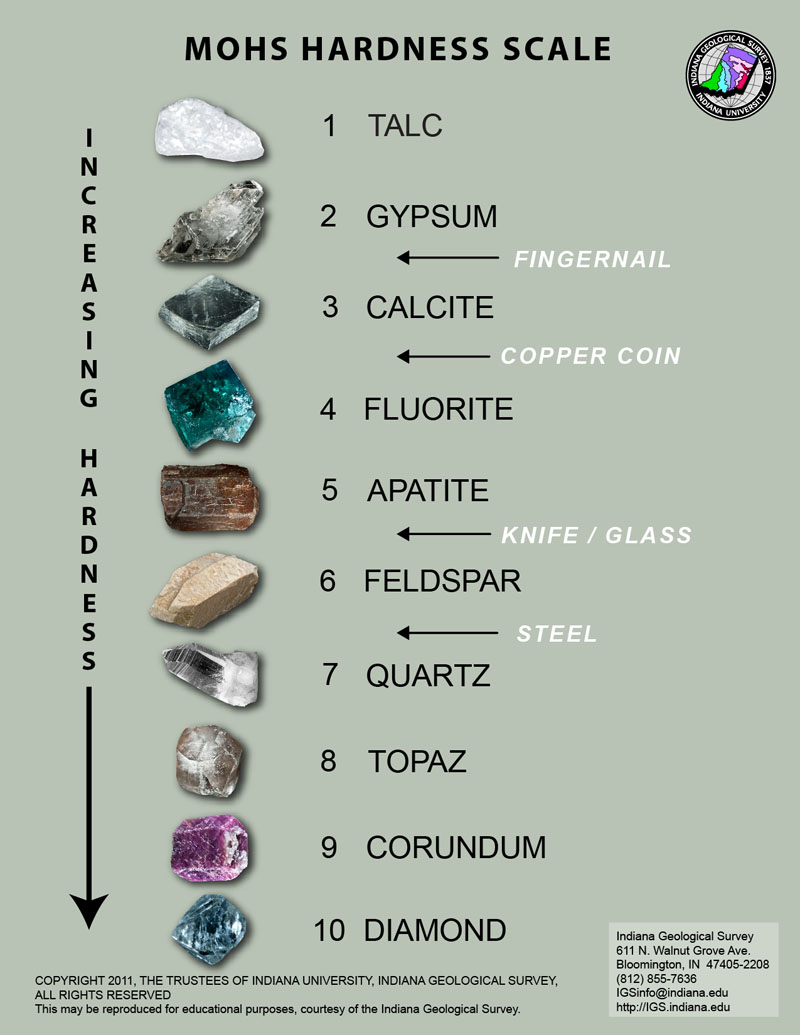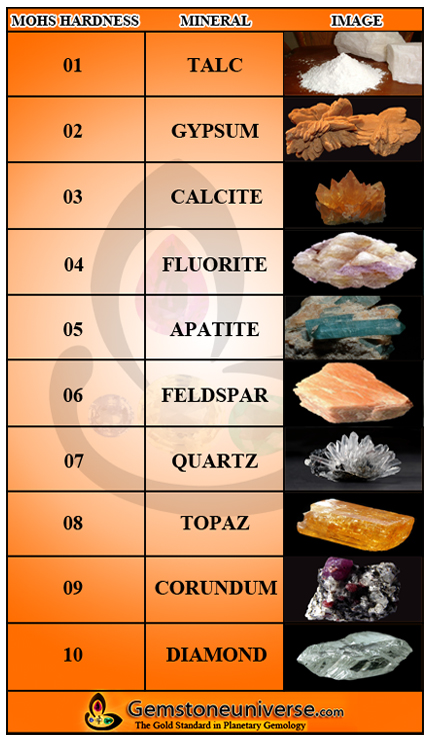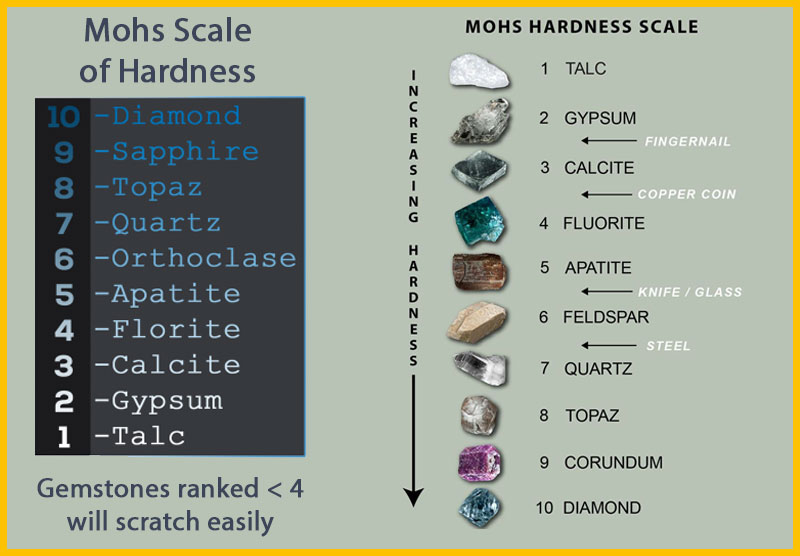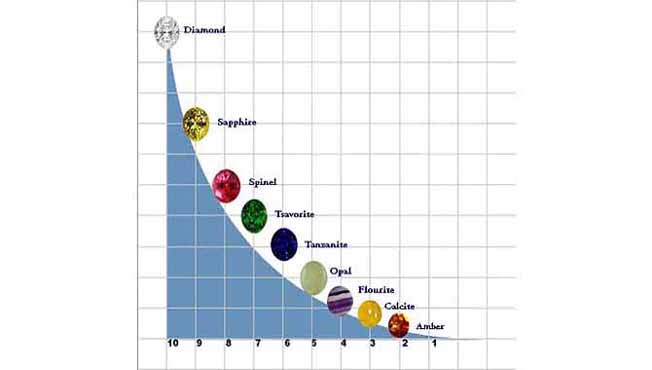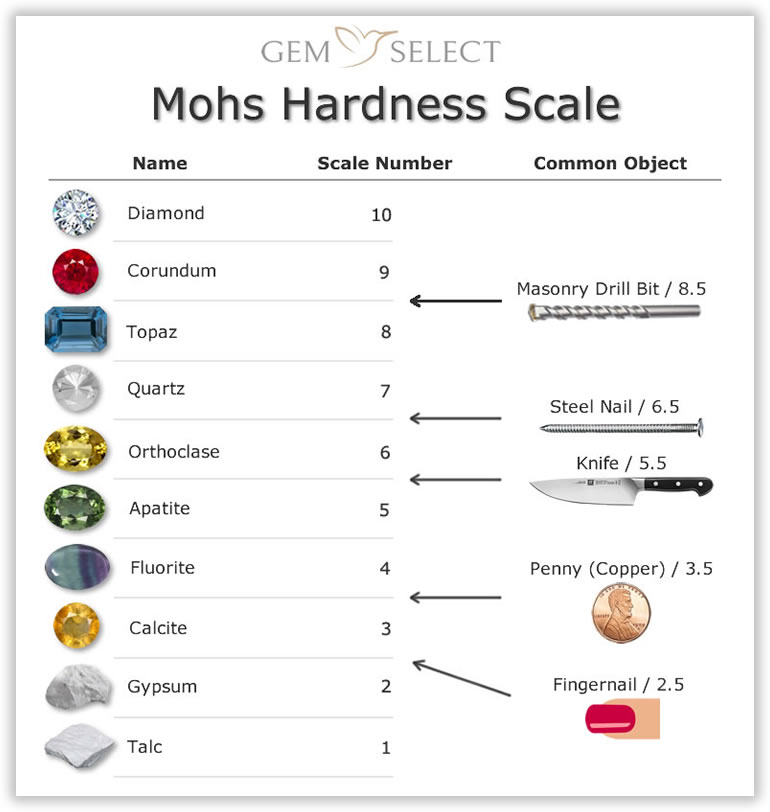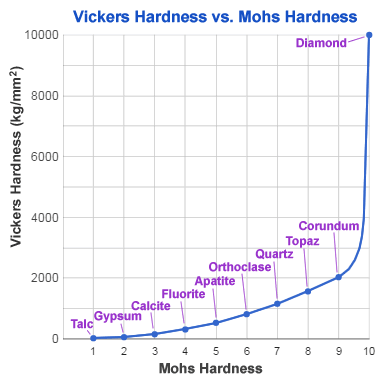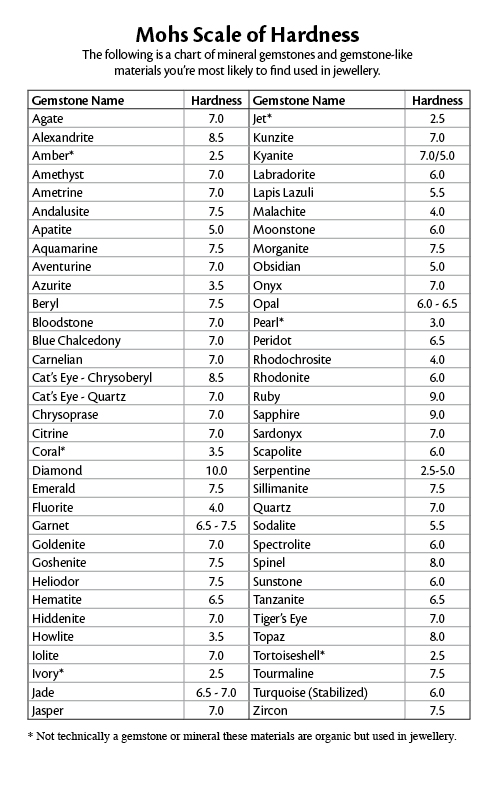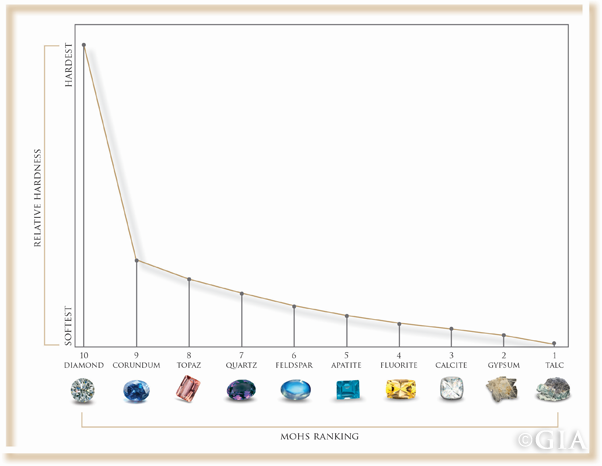Mohs Scale Of Hardness Chart
1 H - Hydrogen.
Mohs scale of hardness chart. The Mohs scale is strictly a relative scale. Mohs scale of mineral hardness chart. 2 Gypsum Plaster of paris.
Mohs Scale of Mineral Hardness In 1812 the Mohs scale of mineral hardness was devised by the German mineralogist Frederich Mohs 1773-1839 who selected the ten minerals because they were common or readily available. The Mohs Hardness Scale is used as a convenient way to help identify minerals. MOHS HARDNESS SCALE Wax 02 Graphite 05-09 5 APATITE Asbestos 5 Manganese 50 Steel 5-55 Hornblende 55 Stainless Steel 55-63 6 ORTHOCLASE Feldspar 6 Hematite 6 Magnetite 6 Pumice 6 Pyrite 63 Agate 65-7 Garnet 65-75 7 QUARTZ Flint 7 Silicon 70 Tourmaline 73 Emery 7-9 Beryl 78.
This chart compares the hardness of index minerals of. Mohs - Vickers hardness comparison. This metal hardness chart organizes different types of metal using the Mohs hardness scale a metric used by scientists to determine the scratch resistance of different minerals.
These reference minerals are 10 and they can be found on the following chart. Hardness Mineral Association and Uses 1 Talc Talcum Powder 2 Gypsum Gypsum is formed when seawater evaporates from Earths surface. The Mohs hardness scale measures a minerals hardness by means of a simple scratch test Name the mineral that belongs in each step of the Mohs Hardness Scale chart.
Apr 25 2018 This metal hardness chart organizes different types of metal using the Mohs hardness scale a metric used by scientists to determine the scratch resistance of different minerals. 119 rows Element Mohs Hardness 1. This chart shows the list of minerals in the Mohs scale that is assigned a value between 1 to 10 to show the hardness.
The Mohs hardness scale is a tool used in mineralogy to determine a minerals resistance to being scratched and aid in the identification of minerals in the field. The chart is known as the Mohs scale of hardness and is still used today especially in the fine. Can be scratched easily with a fingernail.
A minerals hardness is a measure of its relative resistance to scratching measured by scratching the mineral against another substance of known hardness on the Mohs Hardness Scale. 178 rows Hardness Name Hardness. With diamond at the top of the scale at a score of 10 elements and alloys can fall along the metal hardness scale from 10 the most scratch-resistant to 1 the softest.
Viennese mineralogist Frederick Mohs 1773-1839 first developed the comparison chart in the early 1800s that compare the relative hardness of the easily accessible minerals. With diamond at the top of the scale at a score of 10 elements and alloys can fall along the metal hardness scale from 10 the most scratch-resistant to 1 the softest. What mineral is the hardest mineral.
Reference materials may be expected to have a uniform Mohs hardness. Mohs hardness scale measures resistance to abrasion of mineral specimens by scratching them with reference minerals of known hardness. The Mohs scale hardness of minerals can be commonly found in reference sheets.
65 - 75 Mohs. This is why many gems and. The principle behind the Mohs hardness scale is that between two minerals the harder one can be used to produce a scratch mark on the surface of the softer one while the softer mineral will not be.
Slight variations in the hardness of different varieties of the same species are also found. Even the same face of a crystal may show a difference in hardness when scratched in different directions. 30 Mohs Hardness Scale Worksheet.
The scale is not a linear scale but somewhat arbitrary. Quartz Diamond 1 Talc 2 Gypsum 3 Calcite 4 Fluorite 5 Apatite 6 Feldspar 7. This graphic outlines the index minerals and some common objects that are used to determine a.
